talkingfashion » fashion stylist intern
-
Gift Giving 101: The History of the Custom and How to Be a Good Guest
Gift Giving 101: The History of the Custom and How to Be a Good Guest
By Paige McKirahan
‘Tis the season for giving; whether you are the giver or the receiver, there is no denying that this custom is synonymous with the Christmas season. It is hard not to wonder, though, where and when this tradition began. As most traditions and customs do, this one originates in ancient Rome and is a relic of the winter solstice in December. This was celebrated in Rome with gift-giving and continued on as Christianity became more widespread. The date of Christmas was decided sometime in 330 AD and was claimed to be associated with the birth of Jesus; after this milestone, the custom was associated with the story of the Magi presenting gifts to baby Jesus. Along with that, some legends also base this idea of gift giving on Saint Nicholas, a fourth century Greek Bishop more affectionately known as Santa Claus. Presently, it is estimated that there is over $5 billion spent each day during the shopping season alone as the holiday has become somewhat commercialized.

(photo credits to clickorlando.com)
We feel that gift giving can still be personal, and love the idea of hostess gifts. This branch on the gift giving tree is a huge part of etiquette and they are appropriate for casual dinner parties, formal dinner parties, holiday events, weekend visits and housewarming events. These gifts typically are something for the home or in the instance that the event involves a meal, they tend to lean towards wine or desserts. In some countries, this is gift is obligatory and considered a second nature when visiting someone’s home.
If you’re heading to a holiday party over the next month and are scrambling for that perfect gift for your favorite hostess, TalkingFashion has you covered! From salt and pepper shakers to vintage table lighters, we have something for everyone! Head over to our décor collections and you’re sure to be the talk of the party when you walk in with one of our little white boxes!

-
History of the Watch: A Timeless Timekeeping Accessory
The Watch: A Timeless Timekeeping Accessory
By Paige McKirahan
The neverending passage of time is what that we base all of our daily schedules on; from sleep to work to the next fun party, everything runs on the basis of time. But, what is time without a timekeeping device? Without them, we would never be quite sure if were truly on time, and for chronically late people (like myself), this would create quite a problem. People found this to be increasingly troublesome and started looking for a solution; yes, clocks on the wall tell us all we needed to know, but how would we have this knowledge if we were out and about or a clock wasnt near? This question was answered with the creation of the wristwatch in the early 1800s for the Queen of Naples.
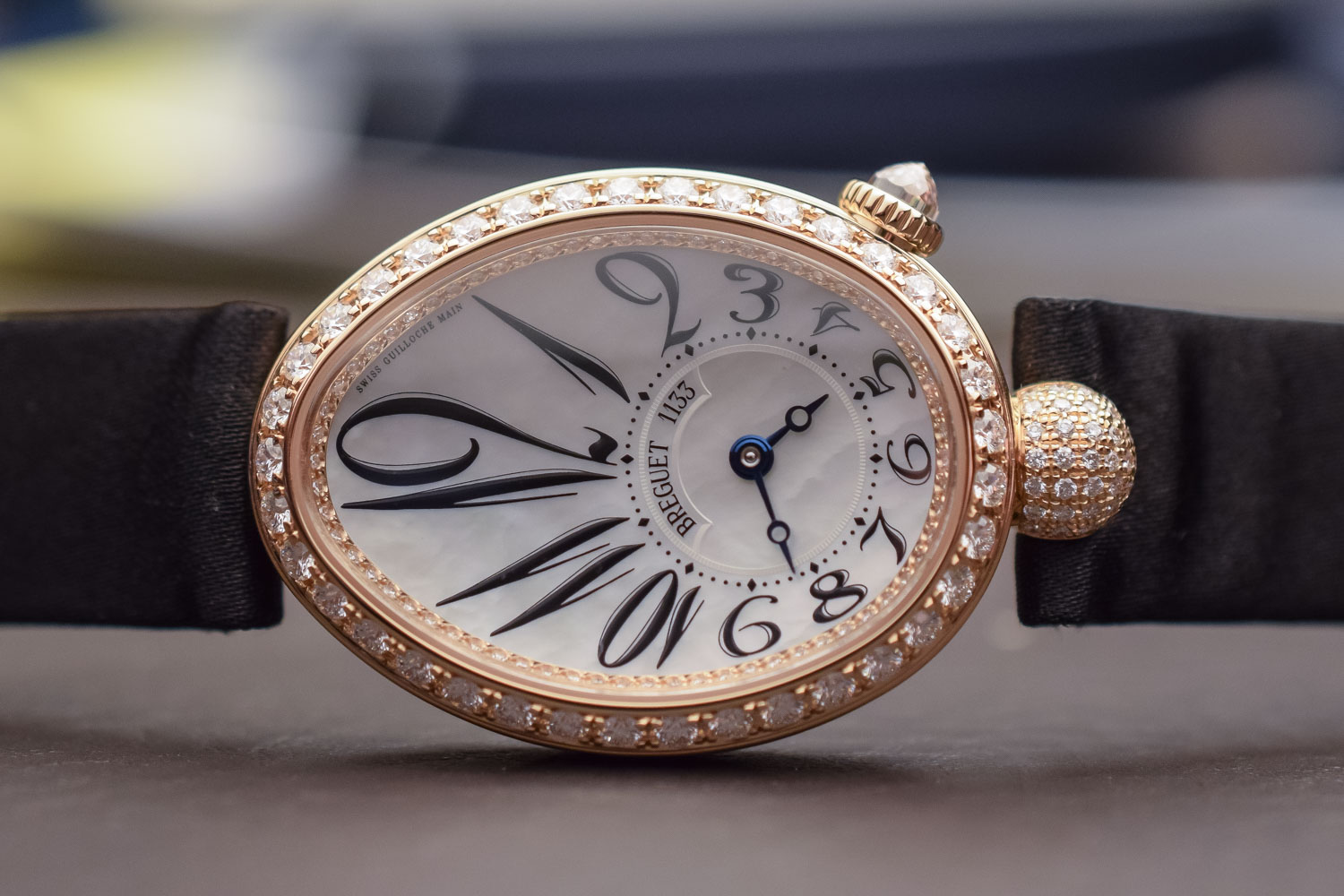
A replica of the first wristwatch
(photo credits to monochromewatches.com)
Despite the fact that arm watches were actually created in the 1570s, they were not worn on the wrist and weren't particularly popular with the public until this updated 17th century design. Arm watches were more so worn by women on account of the fact that they were prone to damage; men wore pocket watches and the first was created in 1574. Wristwatches changed this dynamic on account of the fact that men in the military advocated for the accessory as it allowed them to keep track of time with ease. Alberto Santos-Dumont, a Brazilian aviator, reached out to his friend Louis Cartier to come up with a style that of watch that would allow him to keep both hands on his controls while still being able to properly time flights. Cartier collaborated with watchmaker Edmond Jaeger to develop the Santos wristwatch, which is one of their brands cornerstone pieces.
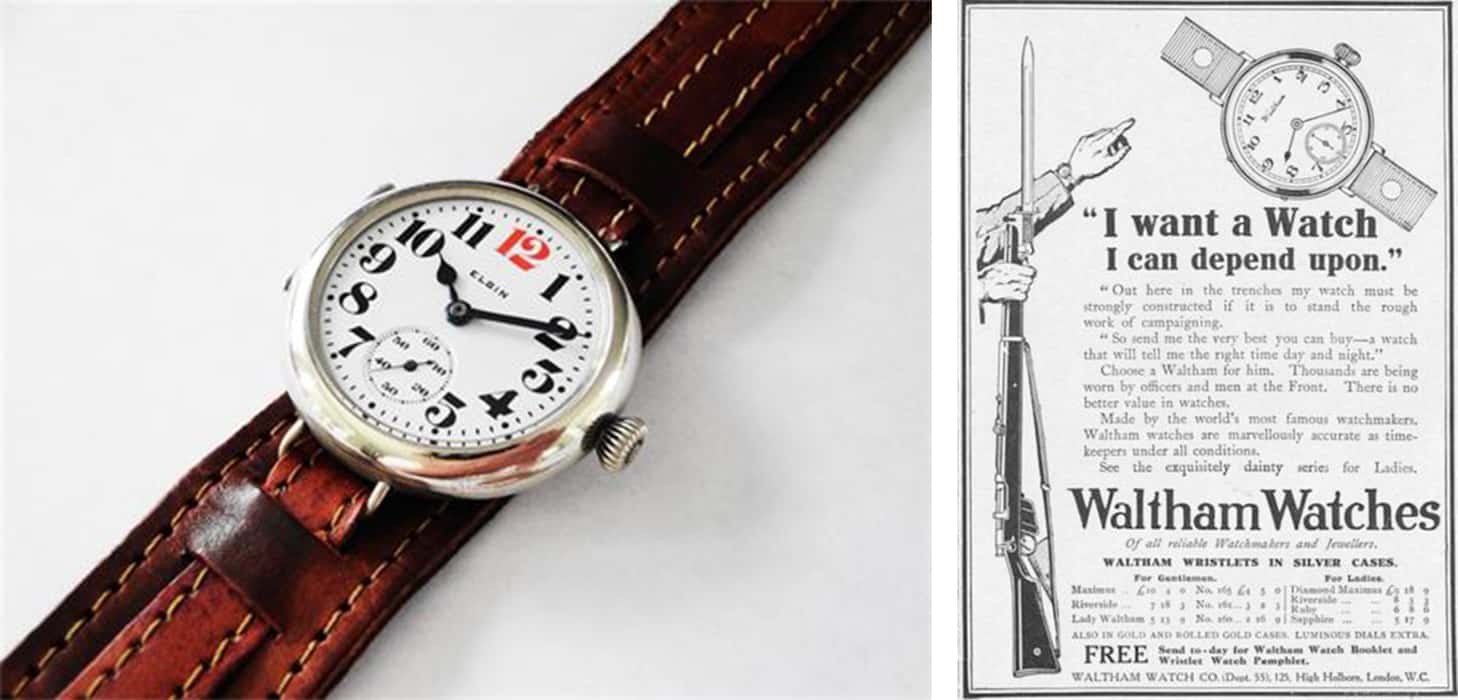
Military watch ad from WWI
(photo credits to wornandwound.com)
As we progressed towards the first World War, the popularization of watches for those in the military grew; the wristwatches they were given were referred to as “trench watches” and they established themselves as part of the Officers Kit for the war front. After this time, this accessory began to truly evolve as industrial advancements allowed for the production of wristwatches with automatic winding. John Harwood, a watch repairer, claimed patents for this ingenuity in 1923 after he was the first who managed to use the kinetic power garnered from the watches' hand movement to changing mechanisms. He then started producing these watches in a factory in Switzerland in 1928, which gave the public a chance to purchase one of his timekeeping pieces that could work for 12 hours on a full charge. In the 1950s, fully electric watches were introduced, with the balance wheel being powered by a solenoid, which is a thin wire trapped around a metallic core that procures electric currents.
This new electric watch allowed for the birth of the quartz watch, which removed all moving parts in mechanical watches; this 1969 invention instead used a battery, allowing them to be more shock absorbent and accurate without constant cleaning or oiling. Quartz watches are still manufactured today, but some luxury Swiss brands choose to create non-quartz options by hand. Today, watches can be made of stainless steel, silver, gold, titanium, carbon fibre, platinum, and aluminum. Some manufacturers even use more high tech silicons and ceramics in experimental design. Aside from regular watches, though, smart watches have made waves in wearable timepieces in the past five years and can be seen on the wrists of millions. Apple, Samsung, and Google have all created their own smart technology, opening the door for other new watches that can be connected to smart devices. Whether you are a fan of the classics or are going all digital, read on to see where your preference falls in the top 5 most iconic watches of all time!
The Cartier Santos
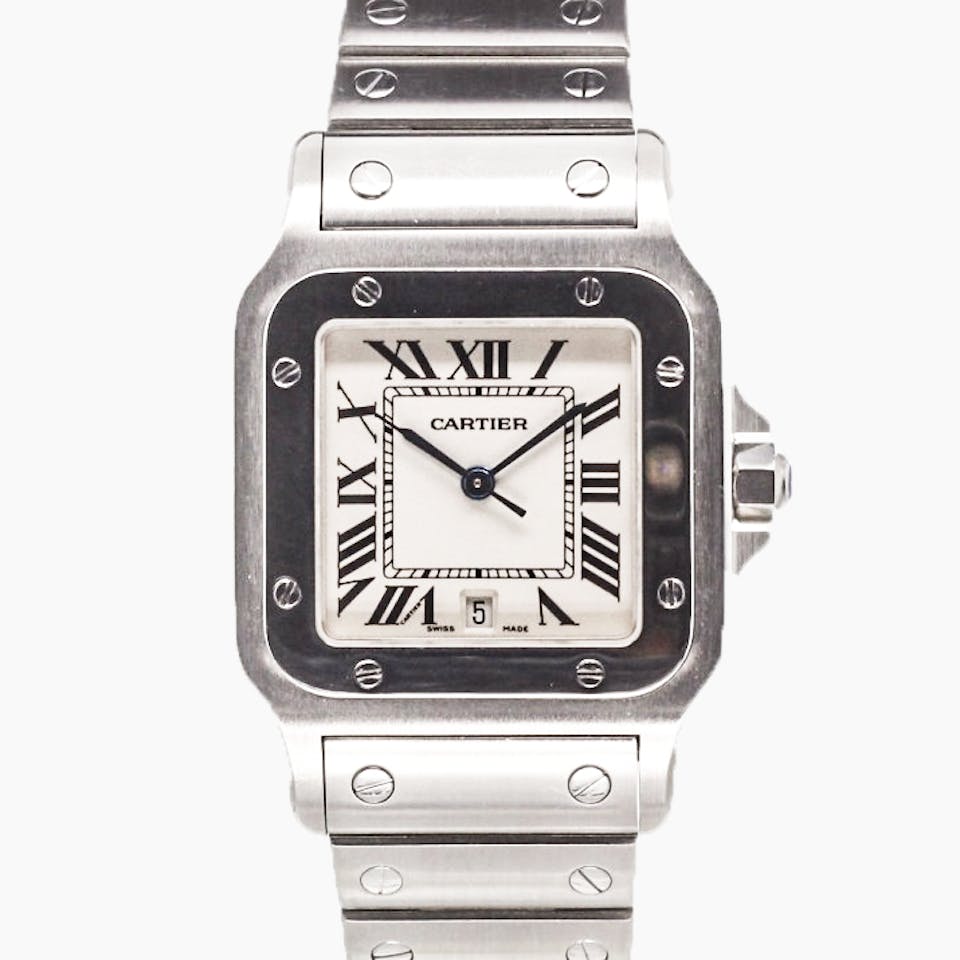
As we learned, this watch was one of the first of its kind and was created to help Alberto Santos keep time while flying his plane. Today, it is an iconic style who’s elegance and history lures in all types of buyers.
Jaeger- LeCoultre Reverso
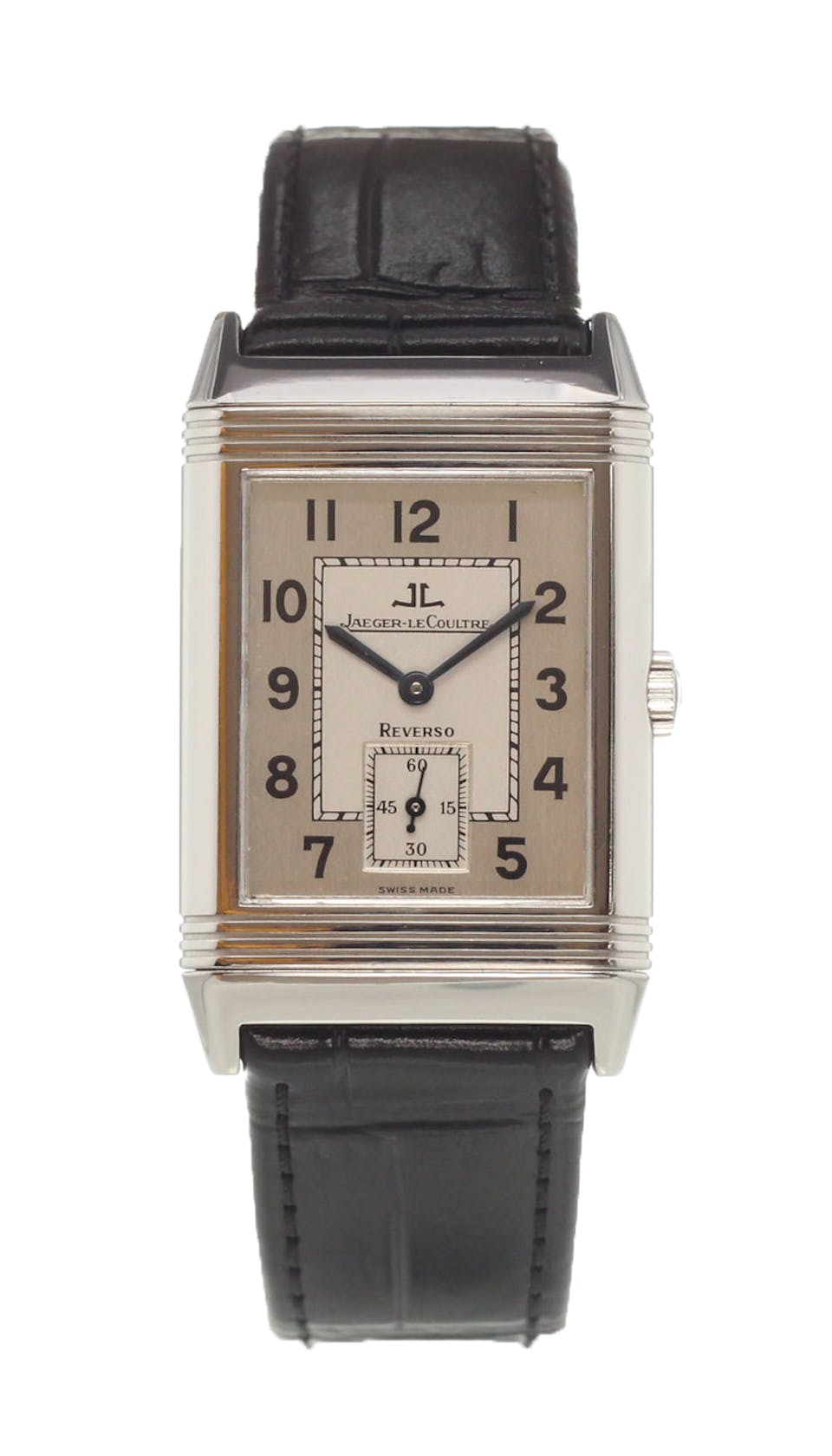
This Art Deco piece made it debut in 1931 as a watch for Britian's elite polo society. It featured a casing that was on a swivel, which ultimately protected the watch from cracks caused by force. Its classic, angular style sets it apart from the rest, appealing to collectors everywhere.
IWC Pilot’s Watch
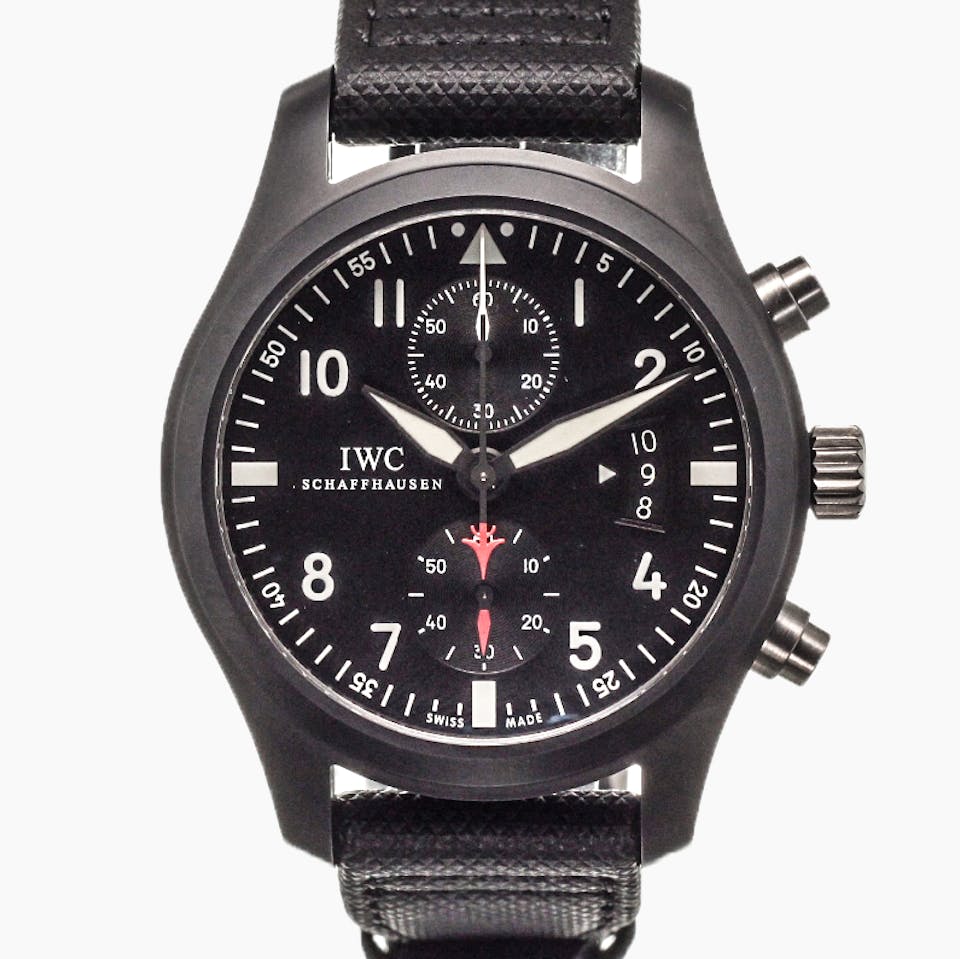
This Special Pilot's watch was the first of its kind at the time of its release by IWC in 1936; it prompted a collection of other military grade watches that captured the praise of the public for decades. This timepieces features a stainless steel waterproof casing that surrounds a softer inner cage, protecting the movement from magnetic fields.
Patek Phillippe Perpetual Calendar Chronograph

This timepiece was one of the first of its kind as it was able to keep track of the date for 200 years without adjustment. Patek released this watch in 1941 and it took the timekeeping community by storm as it was also able to measure small increments of time. Today, it is still widely sought out by collectors and leisure wearers alike.
Rolex Datejust
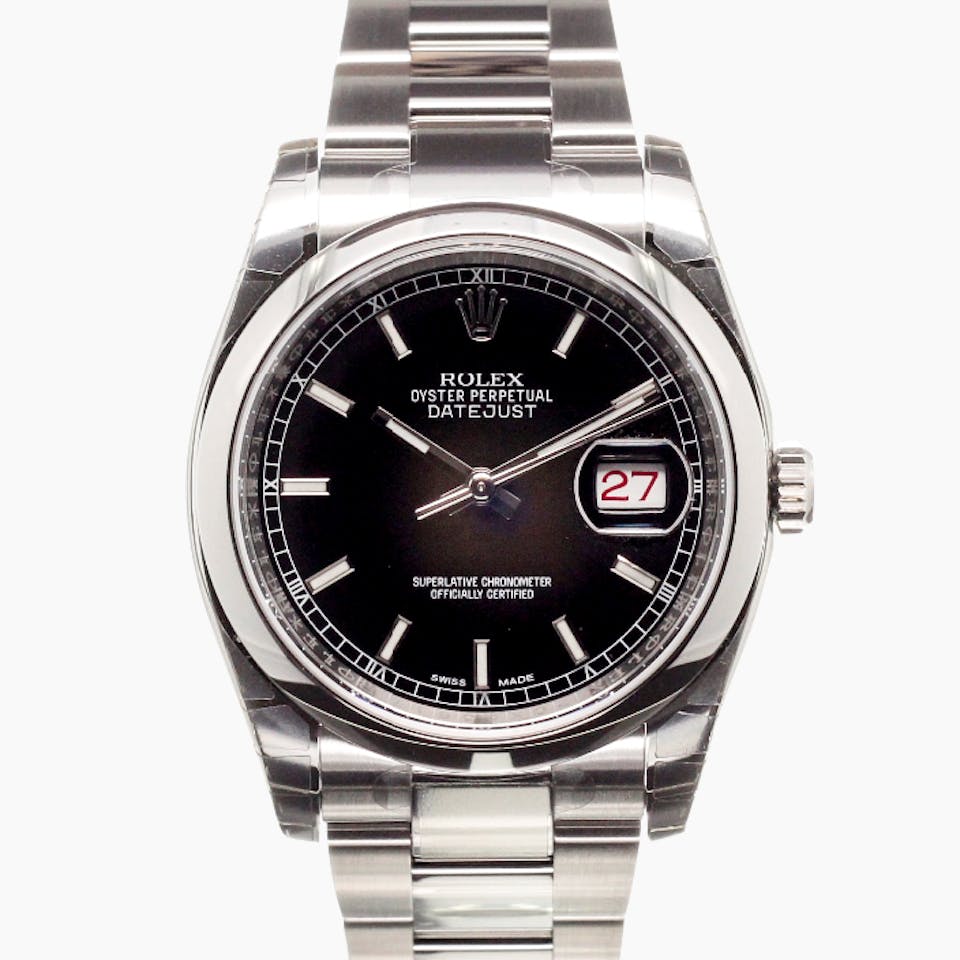
As one of the most iconic watch brands of all time, Rolex released the Datejust in 1945 and it was distinguished by its date indicator. This designs trademark was the Cyclops lense, and its original design has been nearly unchanged. A symbol of strength and intelligence, this timepiece has been worn by the likes of Winston Churchill and Dwight D. Eisenhower.
(all above photo credits to chronext.com)
If you're looking for a way to avoid being fashionably late while still being chic, check out our collection of timekeeping accessories!
-
Designer Spotlight: Sugar Gay Isber
Designer Spotlight: Sugar Gay Isber
By Paige McKirahan
This week, we have decided to spotlight a designer that is not only prominent in our collections, but prominent in jewelry lover's collections over the globe. Gay Isber, affectionately nicknamed Sugar, is a Canadian jewelry designer based out of Austin, Texas. As a seventh generation Texan, she planted her roots in the south with Gay Isber Designs, her namesake jewelry and product design company. As the creative force propelling the business forward, she has been crafting jewelry for over 15 years; she has been featured in national and international media, and has created pieces for everyone from royals to rock stars. She has even been dubbed “a guru of the fashion and jewelry industry” in her home state, which eventually pushed her to receive the Designer of the Year award in 2016. Now that we know of her great successes, let’s learn more about her inspiration, background, and her beautiful creations!

(photo credits to shoplc.com)
Sugar is a self-proclaimed jewelry lover who advocates for conversational pieces that are enjoyed more with every wear. As a creator, she is uninterested in what other designers are producing and focuses more about how her materials inspire her or how she can continue advancing her skills; she feels that she is truly only as good as her last piece.
Gay began her amazing journey by starting off as a painter after graduating with a Master’s Degree in Humanities and Visual Arts. She wanted her paintings to be show stopping, and concluded she would stop art show traffic by creating a bracelet that emulated her artwork’s colorful aesthetic. By the show’s conclusion, she realized that most of the patrons were more interested in her bracelet than her paintings, prompting her to make the transition from art to jewelry. Despite this, she has continued painting as a hobby and many of her jewels look similar to her art.
As a full-time creator, Sugar says that she dreams about jewels and has worked with so many amazing people that make the effort worthwhile. Aside from designing pieces for Michelle Obama, Camilla and Prince Charles, Lady Gaga and Martha Stewart (to name a few), she has also created a line for Harley Davidson and have participated in fundraising events for the company benefiting breast cancer. She participates in a vast amount of charity fundraisers and sells her jewelry at those events, through The Shopping Channel, through her mailing list, and independent retailers. In addition to her career as a designer, she also has been teaching at Austin Community College since 2012 where she offers private or group classes.
Whether it be a custom piece or a simple design, Sugar’s jewelry is eye-catching and commonly features bright colors, beautiful gems, bead work or metallic accents. Looking for some Sugar of your own? We have enough to fill a candy store! Head over to our collection to find some great Gay Isber pieces that are sure to sweeten up this holiday season!
(All biographical information taken from gayisber.com)
-
The Met Museum Presents Jewelry: The Body Transformed
The Met Museum Presents Jewelry: The Body Transformed
By Paige McKirahan
In the wake of The Metropolitan Museum of Art’s most successful fashion related exhibit since its conception (talking about you, Heavenly Bodies Exhibit!), we here at TalkingFashion we have been excited to see what was next for the art-filled attraction based in New York City. Lucky for us, the topic for their new display covers none other than jewelry throughout time; museum patrons will be able to view over 200 pieces from dated 2600 B.C. to the present. The exhibit, which is titled “Jewelry: The Body Transformed”, opened on November 12th and will have a 15-week run in the iconic museum.
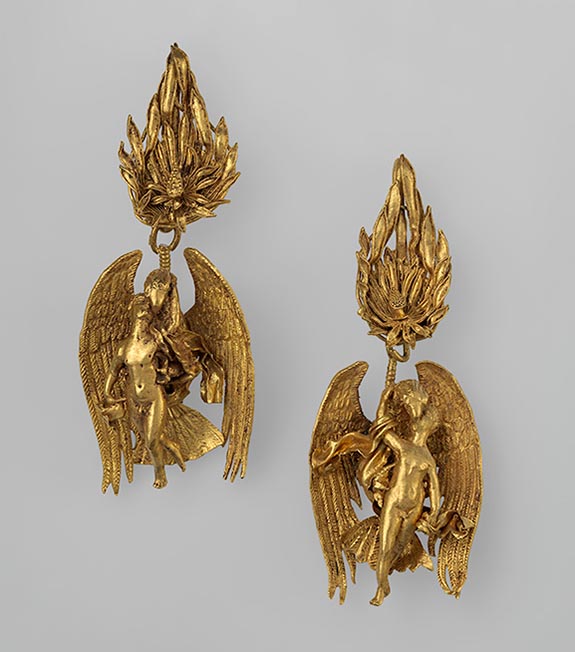
If you are lucky to see the exhibition, you will be faced with an exploration of how “jewelry acts upon and activates the body it adorns” from a historical perspective. The pieces are chiefly taken from the Met collection and many portions of the exhibit pair the jewelry with sculptures, prints, and photographs in order to enhance their story. Jewelry from around the world will be organized into galleries by the part of the body they embellish starting from the top of one’s head and hair; to the nose, lips and ears; neck and chest; and lastly waist, ankles, and feet.

After the exhibition is separated by body part, the remaining galleries are arranged thematically. The Divine Body is focused on early conceptions of jewelry and its previous link to immortality. The Regal Body will look at the use of jewelry as a status symbol. The Transcendent Body moves away from a rank-based evaluation and looks to jewelry’s historical link to the spirit world, where it was said to conjure spirits, appease gods and conjure ancestors. The Alluring Body gallery will celebrate how jewelry evokes romance and desire and the final portion, The Resplendent Body, will focus of elegant pieces designed for luxury settings. To see other magnificent pieces currently on display, head over the The Met's exhibition page. If you are looking to do more than just appreciate historical jewelry, head over to our collection and purchase a piece beautiful enough to be in a museum!
(all image credits to metmuseum.org)
-
Folk Art in Fashion Culture: Folk Couture
Folk Art in Fashion Culture: Folk Couture
By Paige McKirahan
When evaluating the vast number of art movements that have influenced fashion and design for centuries, it seems like the list of inspirational aesthetics is never-ending. From Art Nouveau to Art Deco, we have seen the line between art and fashion become blurred; the Folk Art movement is no exception and has undoubtedly enjoyed its own transition into the fashion industry. So much, in fact, that the American Folk Art museum created an entire exhibit dedicated to this assimilation. The “Folk Couture: Fashion and Folk Art” show, which was first introduced in early in 2014, called upon 13 couturiers to create one of a kind designs that correlate with specific pieces in their art collection. The connection between the two may not always be overtly evident, forcing the viewer to truly consider the pieces and how they have similar characteristics. Yes, some specific motifs from the art that inspired the clothing piece are used, but there are no direct translations of the artworks incorporated into the pieces.


Jean Yu’s chiffon dress and its inspiration, Porcupine, created by David Alvarez in 1981
(photo credits to artnews.com)
Fashion may be the hook to reel in some visitors, but the pieces in no way overshadow the art; instead, they complement the work rather than distract from it. The designers chosen by guest curator Alexis Carreño to design and create these fashion pieces are overwhelming eclectic. Even if they do not normally design pieces with folk art in mind, they all had a great eye as to what aesthetics would transition well into fashion and wowed spectators with their work.
Art often envelops fashion and vice versa; we see this cannibalistic practice illustrated with folk quilts being made of clothing scraps and folk painters like Ammi Phillips looking to fashion in print for posing inspiration. In a city where fashion reigns and museums are always looking for ways to draw in patrons, the American Folk Art Museum proved that other New York museums can incorporate fashion into their galleries successfully (and without the help of Anna Wintour). Feeling inspired by folk aesthetics but not looking to create your own gallery-inspired piece? Check out our collections to find some accessories that are already made and ready for you to purchase!








